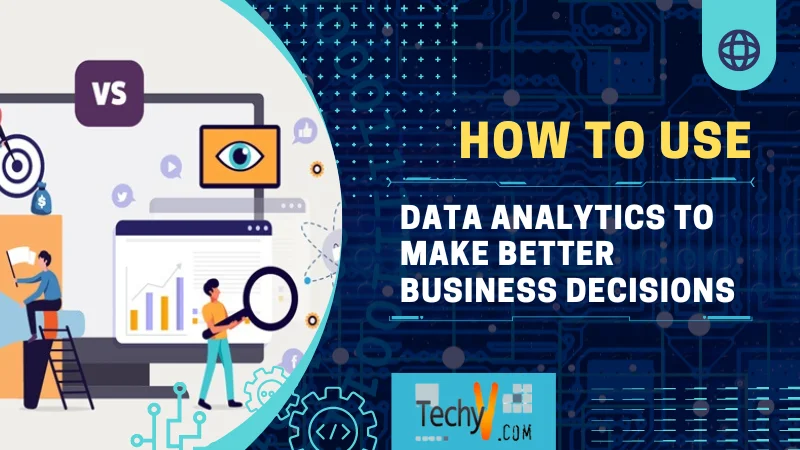Data analytics may be defined as a set of tools and methods that help manage data quality and value for visualization purposes, simplify the work of organizations, support management, and help generate business insights. This article explains what data analysis is, its different types, and its essential uses in organizations. To gain in-depth knowledge and practical expertise, consider exploring the Intellipaat Data Analytics Course, which provides comprehensive training in data analytics concepts and tools.
Data strategies help create more significant insights into target markets, enhance decision-making capabilities, create targeted strategies, improve operational efficiencies, and manage risks. Given below are some techniques and uses of data analytics:
1. Reduce The Cost Of Operation
Paying a data analyst might be expensive, but it is way cheaper when compared to the benefits it brings in the long run. A good data analysis prevents you from financial risks that you may get in future. It ensures the security of data as well as works on things that could make you a lot of money soon. Organizations use data analysis to identify which projects consume more money as well as other things that require more money. It helps save costs, primarily operating and production costs, and finally, replaces manual work with the technology.

2. Monitor Product Performance
Data analytics may be used to track customer behavior towards products and various services. You can make the best use of data analysis to determine the reason behind low sales, in which products people are more interested, why are people choosing specific products, how much people spend on products if there is any better way of selling these products, and several other questions can be answered as well. Studying target audiences and behavior helps businesses in making financial decisions, such as changing product prices or finding an ideal target.

3. Predict Future Trends
By analyzing data, organizations can predict future trends and innovations. By using benchmarking tools, organizations can create future-proof products and services. This way, your business can stay ahead of the rest of the market. The better your business works, the better and more extensive the market you can create by increasing the quality of the products. They may obtain patents on future inventions to gain an advantage over their competitors and maximize profits.

4. Security Strengthening
Data analytics is used by people in business to analyse past security breaches if any. These security breaches can help diagnose the vulnerabilities that caused them. The application of data analytics helps IT experts in analysing, processing and visualizing the logs to identify the source and the way by which the breaches occur. Furthermore, future attacks can be encountered by using specific analytical methods that detect such unusual patterns. In this way, these models can help detect the crime and alert security professionals.

5. Manage Risks
Business risks include customer or employee theft, legal liability, or overstock. Through data analysis, organizations prevent and manage risks that may occur in the future. For instance, a retail store might use a probability model to find out about stores that are more likely to be robbed. This helps you decide whether to increase the security or replace the store.

6. Improve Operational Inefficiency
You can use the insights to increase operational inefficiency. Businesses can gather a large amount of data and feedback based on which they can find meaningful patterns for optimizing the products and services that they offer. Furthermore, through data analysis, businesses can discover new opportunities to streamline operations, lessen prices, or maximize profits. Companies get knowledge about operations that carry out the best results. Not only this, but you get an overview of the underperforming areas as well. In this way, you can adjust your strategies, ratify your problems, and risks, and make improvements which will further affect your decisions in the future.

7. Create Targeted Strategies And Marketing Campaigns.
To attract the right kind of audience businesses can use data to inform the strategies and drive campaigns ensuring promotions. Customer trends, evaluating transactional data, and monitoring online shopping, can be analysed by which marketers can create customized advertising that reaches a wide range of evolving consumer segments and increases the efficiency of the efforts of overall markets. These insights are helpful in the overall growth of the brand simultaneously expectations, loyalty and a customer-oriented market levels up in all aspects.

8. Improved Business Performance
There are unpredictable issues in the business that are likely to occur in the future. However, such problems can be resolved by the use of data analytics. Collecting and examining data about the supply chain helps detect production delays as well as bottlenecks. Data analytics lists the maximum supply for all products of an enterprise. This way, a business can easily detect and resolve the issue immediately.

9. Improve Decision Making
Your final decision-making can be highly influenced and prevented by the use of data analytics. Organizations can save themselves from many financial losses if a change is made. The protective analysis can detect future actions of customers based on the made changes. On the other hand, prescriptive analysis suggests how to react to such changes to maximize the profit. For example, a company comes up with the idea of increasing the prices of the products. They can build a model to see whether the change would affect customer demand. The results can be further confirmed by testing. This way, you can save yourself from poor decision-making.

10. Marketing And Digital Advertising
Marketers use data analytics to understand their target audience. There are different tasks in these two applications that are carried out with data analysis. To understand their audience digital advertising professionals use analytics to understand their likes, dislikes, and other characteristics such as age, race and gender. They also make use of specific tools to segment their audience based on behavior and interests. Also, to achieve high conversion rates, experts use data analysis fortrends and create relevant content that will retain your attention for a long time. They do this by analyzing events to learn purchasing patterns and frequency. These were some of the uses of data analytics that businesses apply in their strategies.

















